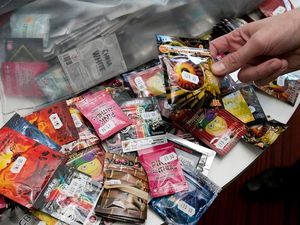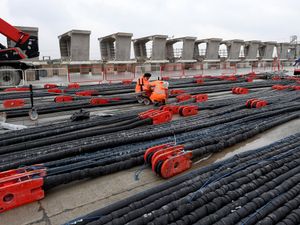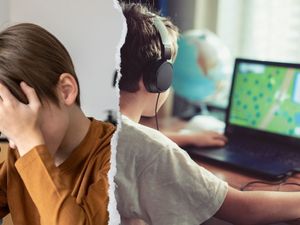Legal highs ‘bigger threat’ than traditional drugs
An estimated 1,000 legal highs are in circulation, many of which are more dangerous than their better-known counterparts, an expert says.

So-called “legal highs” are a bigger threat to society than traditional illegal drugs such as cocaine and ecstasy – despite a blanket ban on the substances imposed in 2016, an expert has said.
An estimated 1,000 different legal highs, originally created as “legal” substitutes for illicit drugs, were now in circulation, said Professor Colin Davidson.
Perversely, the explosion in numbers of the drugs to hit the street was linked to earlier piecemeal attempts to outlaw them, he explained.
This only resulted in larger numbers of more varied drugs being manufactured as the arms race between suppliers and the anti-drug authorities escalated.
“By banning them we’ve created a monster,” Prof Davidson told journalists at the British Science Festival at the University of Hull.
He estimated that despite the current total ban, legal highs could still be obtained from the internet and one in 10 young people was taking the drugs.
One in 20 was using them to such an extent that they were likely to suffer long term health problems.
Prof Davidson, from the University of Central Lancashire, has studied dozens of legal highs and shown how in almost every case they were more dangerous than the traditional drugs they mimicked.
The research, mainly conducted on rats, found that the cocaine-type drug Ivory Wave had a much stronger effect on the dopamine system – a key signalling network in the brain – than the original.
“People taking this drug were getting psychotic events,” said Prof Davidson.
Meow Meow, a form of amphetamine, caused neurotoxicity – while the ecstasy-like drug Benzofury was likely to damage heart valves over time.
Taking the legal high ketamine for three months led to a risk of bladder incontinence.
But for Prof Davidson, the most harmful legal highs were those mimicking cannabis, such as spice and K2.
He said: “These drugs are 10 to 100 times more powerful than cannabis. The chances are that people who take these drugs will develop schizophrenia.”
Normal cannabis already tripled the risk of psychosis, he explained.
He added: “People take drugs because of a short term effect. They take a drug like cocaine and in two minutes they’re high. They’re not looking two or three years down the line.
“People who took amphetamines in the 1970s are now more likely to have Parkinson’s disease than those who did not.
“I do think legal highs are a bigger threat than traditional drugs.
“People who traditionally use drugs have an idea of how much to take, and if they end up in accident and emergency, doctors have an idea of how to treat them.
“With legal highs, people have no idea how much to take, and if they turn up at A&E, the doctors don’t really know what to do.
“For that reason, they are potentially a bigger problem.”
He added that there were “plenty of cases” of deaths caused by legal highs, but no-one knew the true number.
Coroners were often not keen to link deaths to legal highs because of a lack of evidence.
“More people will be dying from legal highs than has been documented,” said Prof Davidson.
At the same time he stressed there was no such thing as a “bad drug”. It all depended on how much of the drug you put in your body.
Many legal highs may have therapeutic potential, but since the 2016 ban it had become much harder to conduct research on the drugs, said Prof Davidson.
“Now you haves to pay £3,000 a year to get a special licence to do it,” he said.
He thought education programmes, especially aimed at children, would be more effective than banning the drugs.





